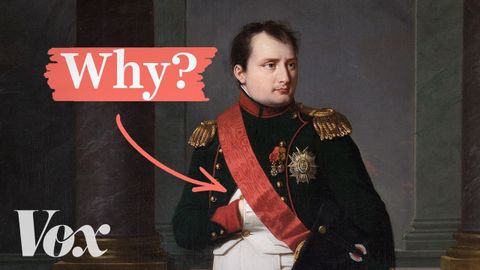
Subtitles & vocabulary
Napoleon's missing hand, explained
00
林宜悉 posted on 2020/12/18Save
Video vocabulary
sort
US /sɔrt/
・
UK /sɔ:t/
- Transitive Verb
- To organize things by putting them into groups
- To deal with things in an organized way
- Noun
- Group or class of similar things or people
A1TOEIC
More stick
US /stɪk/
・
UK /stɪk/
- Verb (Transitive/Intransitive)
- To push a sharp or pointed object into something
- To join together using glue or paste
- Countable Noun
- Long thin piece of wood from a tree
A2
More apparently
US /əˈpærəntlɪ/
・
UK /əˈpærəntli/
- Adverb
- According to what you heard; from what can be seen
A2TOEIC
More overwhelming
US /ˌovɚˈhwɛlmɪŋ, -ˈwɛl-/
・
UK /ˌəʊvəˈwelmɪŋ/
- Transitive Verb
- To defeat something or someone completely
- To affect someone emotionally in a strong way
- Adjective
- Having too much to handle (e.g. work)
- Very great or very strong; so powerful that you cannot resist or decide how to react
B2
More Use Energy
Unlock All Vocabulary
Unlock pronunciation, explanations, and filters
